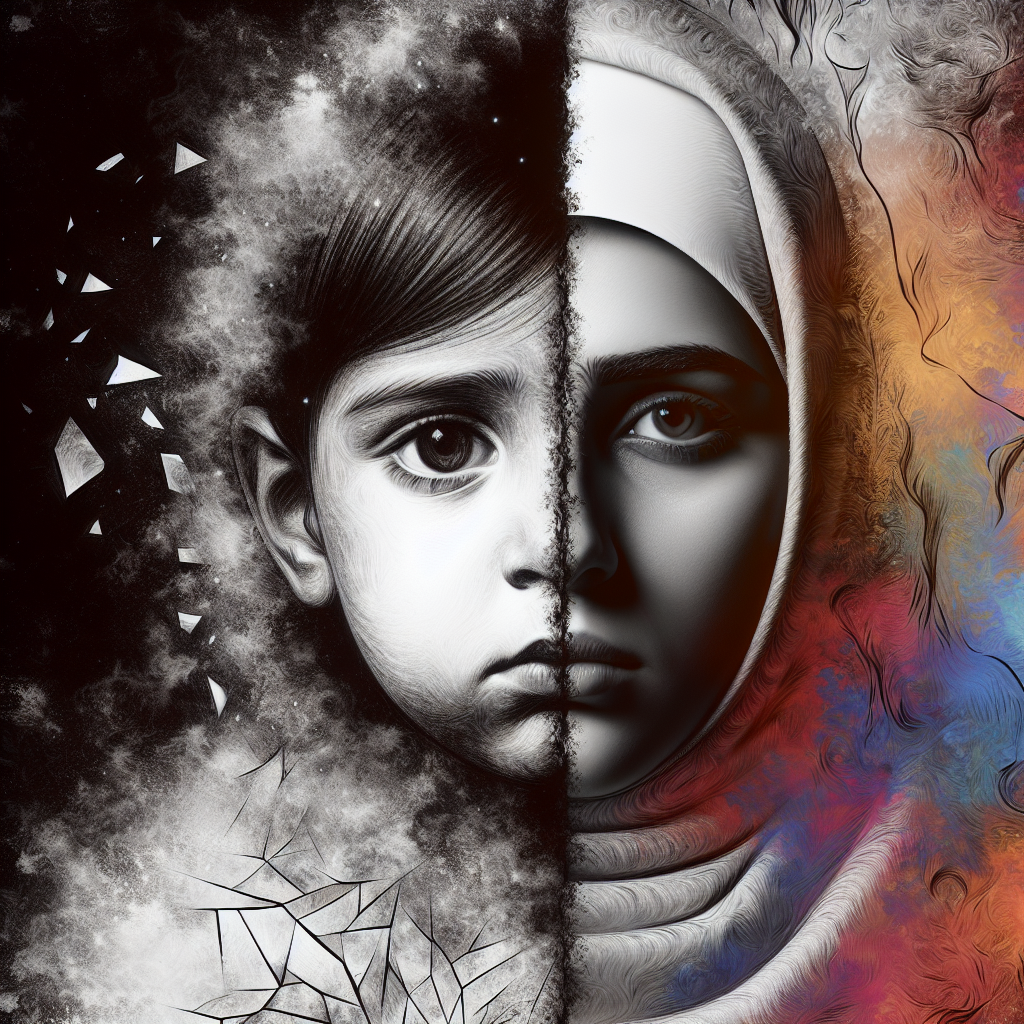The Hidden Scars: How Childhood Trauma Shapes Adult Psychologies – Unveiling the Impact
Introduction
Imagine waking up one day to realize that the emotional echoes from your childhood have shaped not just who you are, but how you navigate the world as an adult. Welcome to the complex domain of “The Hidden Scars: How Childhood Trauma Shapes Adult Psychologies.” This journey delves into the intricate relationship between our formative years and our adult behaviors, emotions, and relationships. The influence of childhood trauma is as insidious as it is profound, sometimes manifesting in ways that leave us feeling lost and disconnected as adults. Understanding this critical relationship is essential not only for personal healing but also for breaking generational cycles of trauma.
I. Understanding Childhood Trauma
What is Childhood Trauma?
Childhood trauma refers to any distressing experience that significantly impacts a child’s emotional, psychological, or physical well-being. This can include neglect, abuse, family instability, or witnessing violence. According to the CDC, approximately 60% of adults report experiencing at least one type of adverse childhood experience (ACE).
Table 1: Types of Childhood Trauma
| Type of Trauma | Description |
|---|---|
| Physical Abuse | Infliction of physical harm on a child |
| Emotional Abuse | Verbal or psychological maltreatment |
| Neglect | Failure to provide basic needs for physical/emotional care |
| Sexual Abuse | Any sexual activity with a child |
| Domestic Violence | Exposure to violence within the home |
The Neurobiological Impact
Childhood trauma can alter brain structure and function, affecting areas responsible for stress response, emotional regulation, and memory. Research indicates that high levels of stress hormones like cortisol can have long-term detrimental effects on the developing brain.
II. The Long Shadow of Trauma on Adult Psychologies
1. Attachment Styles and Relationships
Childhood trauma often influences attachment styles in adulthood. Secure attachments formed during nurturing experiences contribute to healthier adult relationships. Conversely, trauma can lead to insecure attachment styles—such as anxious or avoidant—which create barriers to intimacy.
Case Study: Sarah’s Anxious Attachment
Sarah grew up in a household where emotional validation was scarce. As an adult, she finds herself in relationships filled with fear of abandonment and constant anxiety. This case underscores how “The Hidden Scars: How Childhood Trauma Shapes Adult Psychologies” plays out in interpersonal dynamics.
2. Mental Health Outcomes
Adverse childhood experiences correlate with increased risk for mental health disorders, including depression, anxiety, and PTSD. The long-term effects can be debilitating, affecting one’s ability to lead a fulfilling life.
Table 2: Common Mental Health Disorders Linked to Childhood Trauma
| Disorder | Prevalence Rate in Trauma Survivors (%) |
|---|---|
| PTSD | 40-60% |
| Depression | 30-50% |
| Generalized Anxiety | 20-30% |
III. Coping Mechanisms and Behavioral Patterns
1. Coping Strategies Developed in Childhood
Individuals often develop “survival” coping strategies that can persist into adulthood, such as substance abuse, people-pleasing, or emotional numbing. These behaviors can hinder personal growth and healthy relationships.
Case Study: John’s Substance Use
John experienced physical abuse as a child and turned to alcohol in adulthood as a coping mechanism. His struggles highlight how “The Hidden Scars: How Childhood Trauma Shapes Adult Psychologies” can lead to destructive patterns.
2. The Role of Resilience
While trauma can have severe effects, many individuals also develop resilience. Factors such as supportive relationships and personal strengths can counteract negative impacts.
IV. Healing from Trauma
1. Therapy and Professional Support
Therapeutic interventions such as Cognitive Behavioral Therapy (CBT), Eye Movement Desensitization and Reprocessing (EMDR), and trauma-informed care can significantly aid recovery.
Case Study: Lisa’s Healing Journey
After years of struggling with anxiety linked to her childhood trauma, Lisa began EMDR therapy. Over time, she learned to process her experiences and reframe her narrative, illustrating the potential for healing through professional support.
2. Self-Help Strategies
Beyond professional help, self-care practices such as mindfulness, journaling, and establishing healthy boundaries play a crucial role in mitigating the long-term effects of childhood trauma.
V. Breaking the Cycle of Trauma
1. Creating Awareness
Becoming aware of the hidden scars is the first step toward healing. Understanding the impact of childhood trauma on adult psychologies can empower individuals to break generational cycles.
2. Building Support Systems
Social support is crucial for recovery. Forming relationships with understanding peers or joining support groups can provide the validation and encouragement needed for healing.
Conclusion
Childhood trauma casts long-lasting shadows over adult lives, influencing emotions, relationships, and mental health. However, understanding “The Hidden Scars: How Childhood Trauma Shapes Adult Psychologies” opens doors to healing and resilience. By recognizing these impacts, individuals can embark on paths of recovery, breaking cycles of trauma and fostering healthier futures.
FAQs
1. What are some signs of childhood trauma in adults?
Signs may include anxiety, depression, difficulties in relationships, or recurrent flashbacks of traumatic events.
2. Can childhood trauma be resolved?
Yes, with appropriate therapy and support, individuals can heal and develop healthier coping mechanisms.
3. How do professionals determine if a person has experienced childhood trauma?
Mental health professionals often look for a history of adverse childhood experiences alongside current emotional and behavioral issues.
4. What roles do genetics play in adult outcomes from childhood trauma?
Genetics can influence an individual’s vulnerability to trauma, but environmental factors and personal resilience also play significant roles.
5. Is therapy the only way to heal from childhood trauma?
While therapy is highly effective, self-help strategies, support groups, and personal resilience can significantly promote healing alongside professional support.
This comprehensive exploration of “The Hidden Scars: How Childhood Trauma Shapes Adult Psychologies” emphasizes that, while trauma can leave profound scars, the journey toward healing is entirely possible. By nourishing a growth mindset and seeking supportive relationships, individuals can reclaim their lives, replace hidden scars with stories of triumph and resilience, and ultimately pave a path toward holistic well-being.

